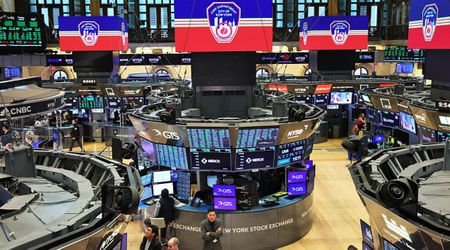From The Brink Of Bankruptcy To a $300 Billion Powerhouse, AMD's Spectacular Rise In The AI Era

Semiconductor developer Advanced Micro Devices (AMD) rose to a market value of $300 billion for the first time last Thursday riding on an AI Stock rally. The latest milestone marked an impressive run for the chipmaker whose shares rose 9% translating into a market value of $311 billion. This also marks an incredible rise of the company which was ranked 222 in the S&P 500 five years ago. While today the company ranks 22, it has also proven to be a formidable leader that changed its course after facing near bankruptcy in 2015.
Rise of AMD from The Ashes
AMD was founded in 1969 by Jerry Sanders and eight others. Sanders, who was a marketing executive, had left Fairchild Semiconductor that shares credit for the invention of the integrated circuit, to start AMD.
While the CPUs were manufactured by AMD, they were mostly designed by Intel. Thus, as AMD grew at a breakneck rate, Intel started viewing the company as a potential threat and decided to stop giving AMD access to its designs.
AMD then began creating their CPUs by reverse-engineering existing Intel products. They released their first original CPI called the K5 in 1996 whose performance was at par with Intel’s Pentium of 1993.
By 1999, AMD had purchased NexGen, a fast-emerging company in the computer processor space, and together the two firms produced the remarkable K7 Chip. With this AMD’s net sales skyrocketed from $2.5 billion in 1998 to $4.6 billion by 2000.
By the early 2000s, AMD became a formidable semiconductor corporation and made $1 billion in profits.
Despite the success, AMD was plagued by growing internal conflict and financial issues from the oversupply of chips. Their new Dresden Fab 30 manufacturing plant also proved to be quite an expensive project and things worsened by poor margins. Thus, with looming debt AMD set off on a bumpy road.
By 2015, AMD, the once great semiconductor company, was on the verge of bankruptcy. The company had a sustained net loss of $7 billion and financial analysts called its stock “a joke”, according to a CNBC report. With falling market sentiment AMD slipped just under $2 a share by 2015.
It was time for AMD to change its ways. Accordingly, Taiwanese-born American MIT engineer Lisa Su was appointed president and CEO of AMD in 2014. She previously held a C-Suite position in the company for 2 years.

Su instituted a strategy to minimize debt and focused processor design and manufacturing on computer gaming, cloud, and data center compatibility. The new strategy worked, and the new product line AMD added $2.5 billion in revenue between 2015 and 2018.
In 2022, AMD made history by surpassing Intel's market cap for the first time. The same year it also made the biggest semiconductor acquisitions in history, by acquiring adaptive chip company Xilinx for $49 billion.
Also, by 2022, AMD chips were in one of two Tesla models, NASA’s Mars Perseverance land rover, 5G cell towers, and the world’s fastest supercomputer, as per CNBC.
Further, with the advent of AI and other advanced computers, the demand for chips skyrocketed putting AMD in a stunning position.
After Thursday’s big rally, Nvidia Corp. (NVDA) remains the leader in the artificial intelligence space and the hype around it has helped AMD as well.



















